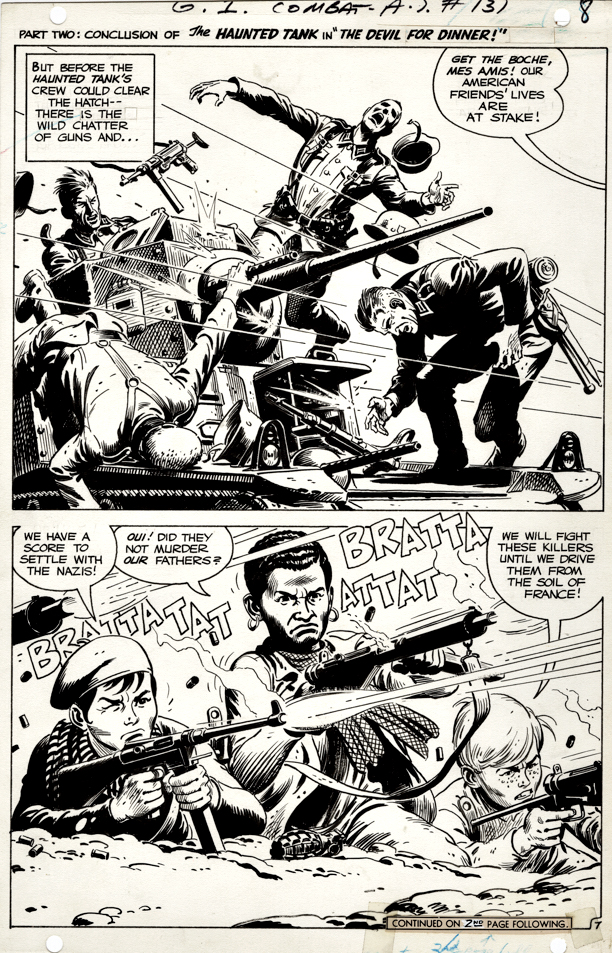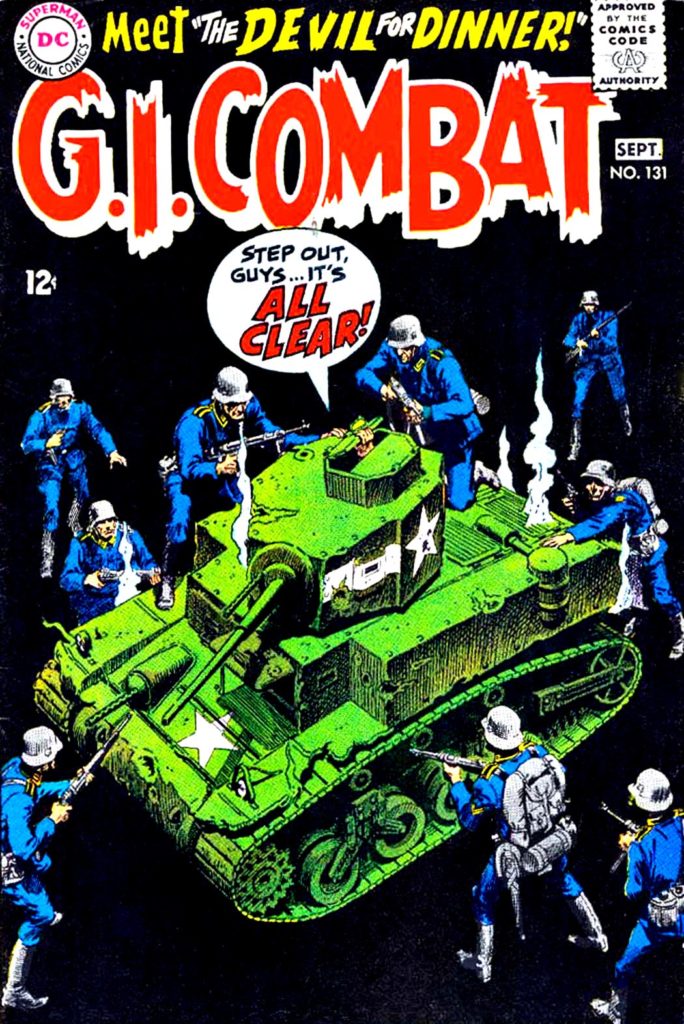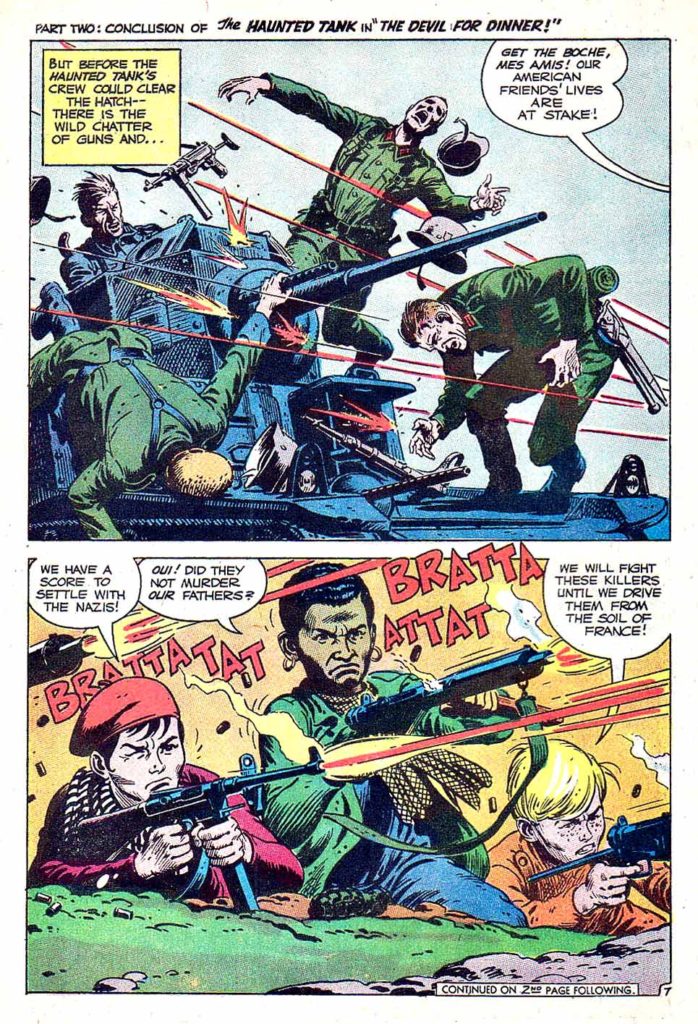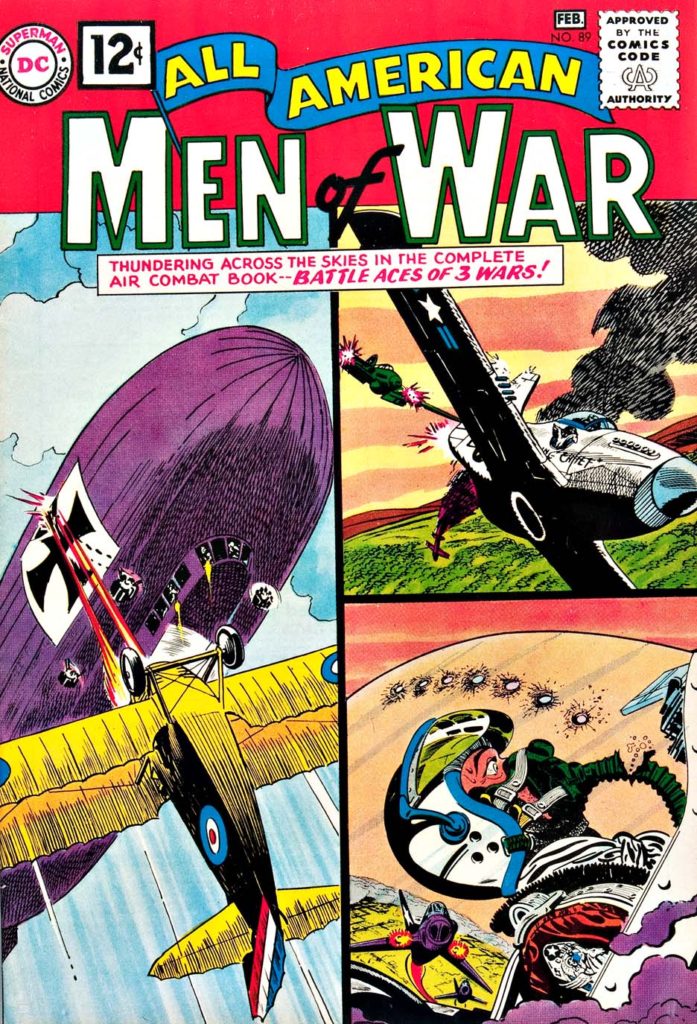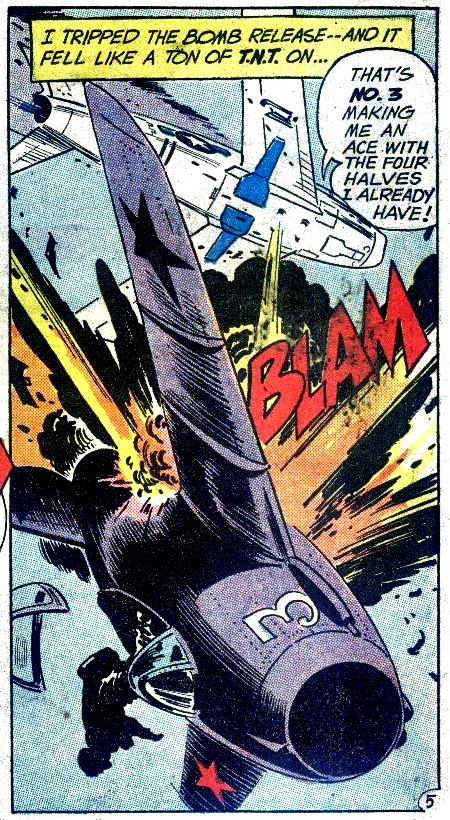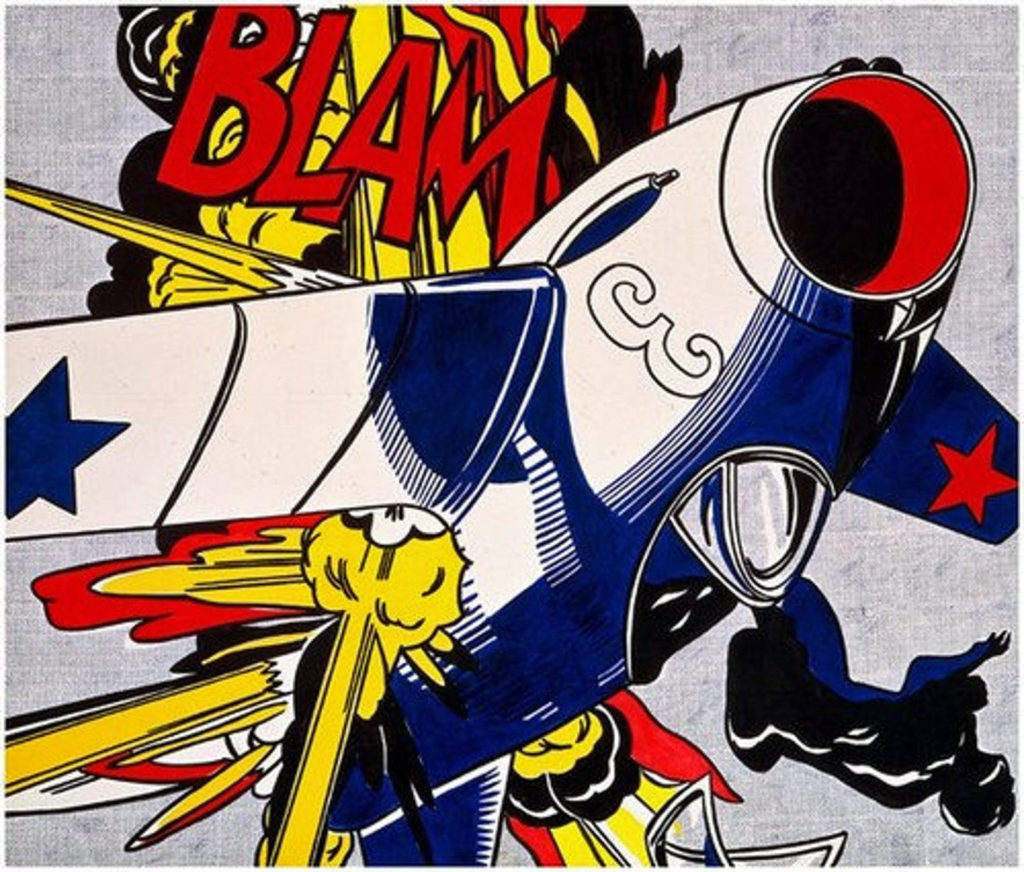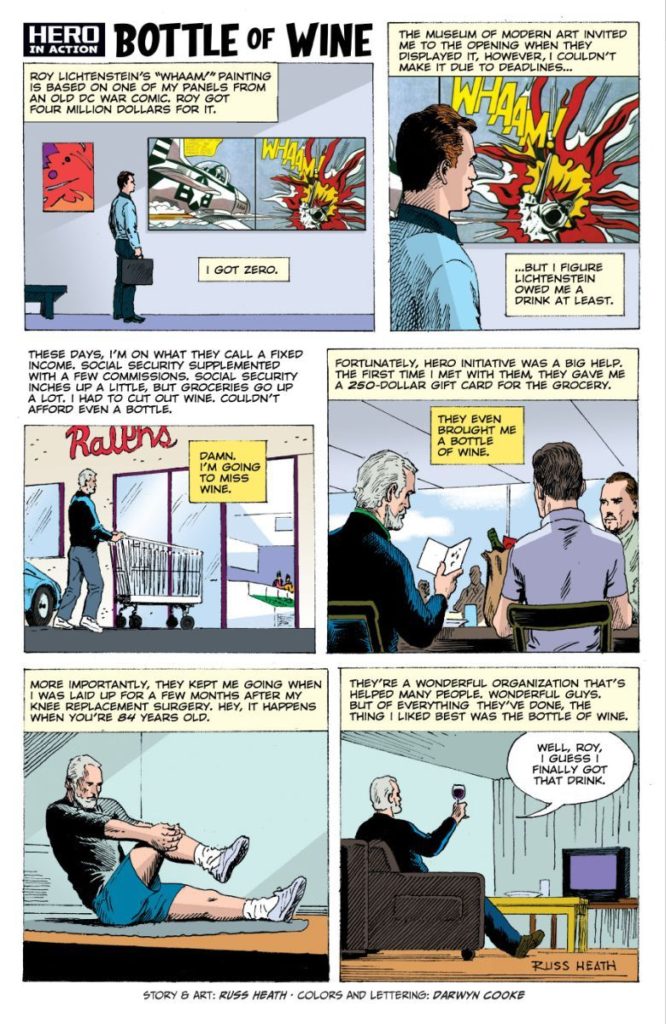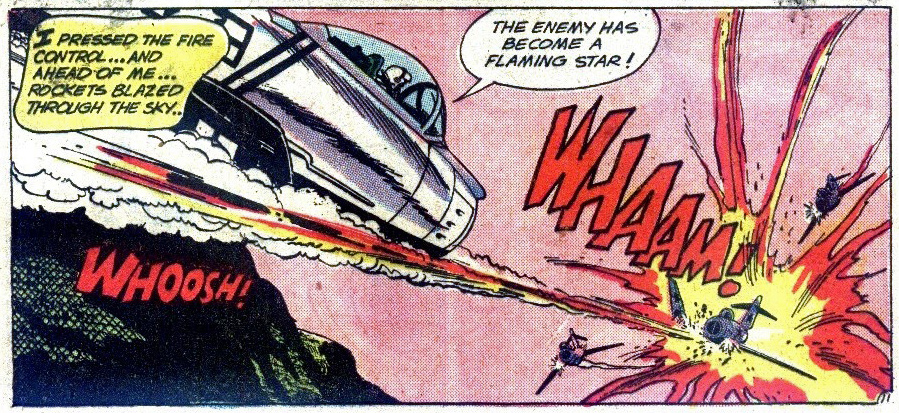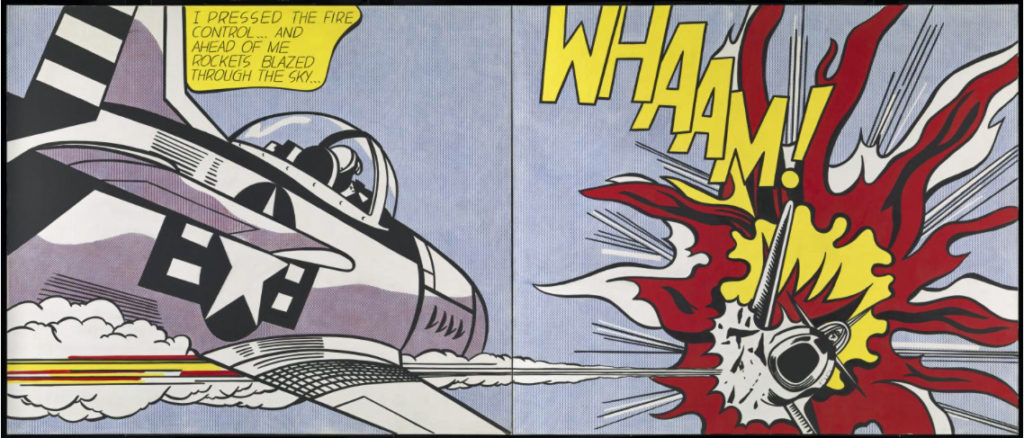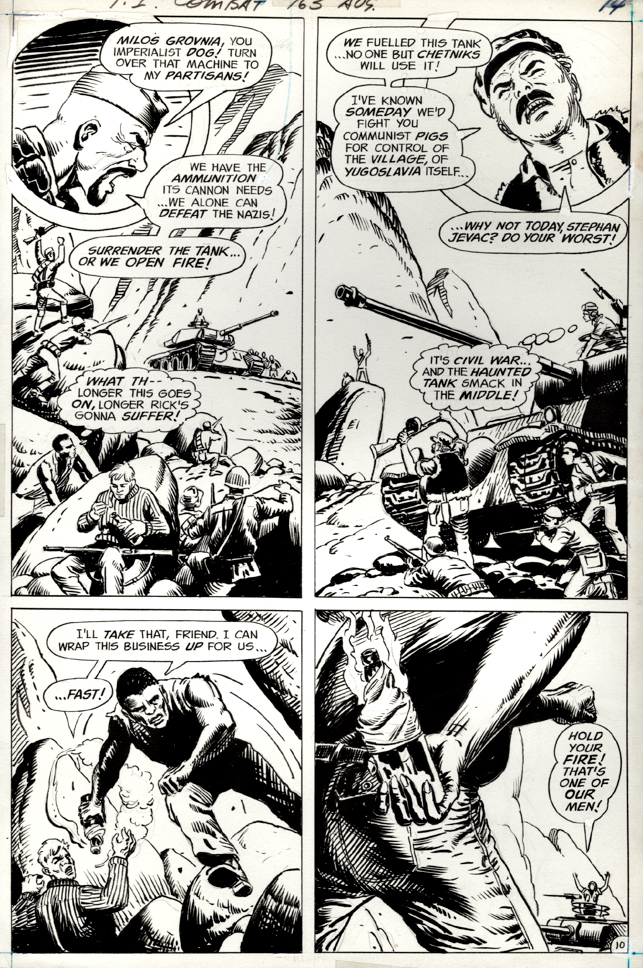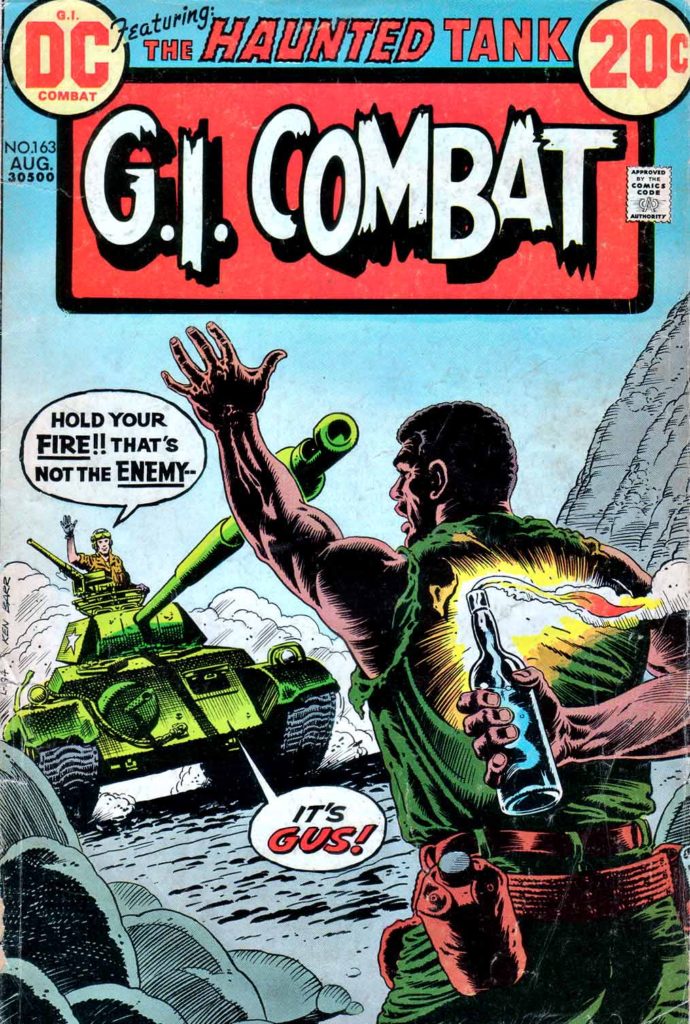Russ Heath — The Devil For Dinner
G.I. Combat #131, September 1968
Roy Lichtenstein never met a DC war stories artist he didn’t like — including Russ Heath.
More accurately, Lichtenstein probably never met a comic book artist he didn’t like.
Lichtenstein, the legendary “Pop” modern artist of the 60s referenced much of his work from contemporaneous romance and war stories. The critics raved, and art fans swooned, but hardly anyone paid much attention to the original source material.
That changed, but only (and slowly) over time. To this day, there’s never been an official Lichtenstein catalog that identifies all the source comics. In many cases, the works are only occasionally acknowledged.
There is a great website about all this, although the author is reluctant to share the specific issues and dates. Still with all the examples visually presented, it is pretty mind blowing. It’s nearly impossible to find an original Lichtenstein without a corresponding comic book reference.
But as always, we digress.
Behind Joe Kubert, Russ Heath is probably the single artist most identified with DC’s classy war books of the silver and bronze age.
He was a terrific artist, who could accomplish inventive storytelling, polished lines and wonderful detail.
And he was quite the character too. But those are stories I will save for another day… Except…
When Russ was dealing with some health and financial issues the Hero Initiative stepped in and provided some much needed support. In return, Russ created this special strip below to pay tribute to that support.
Sounds good. Except…
Heath choses to reference Lichtenstein’s “Whaam” a DC war panel that was actually created by Irv Novick. Russ’ art is the inspiration for “Blam” an equally powerful, but lesser known painting. (Both are originally from the same issue of Men of War.)
That is an odd one.

